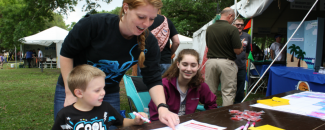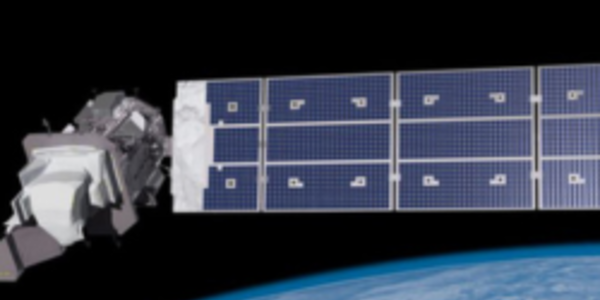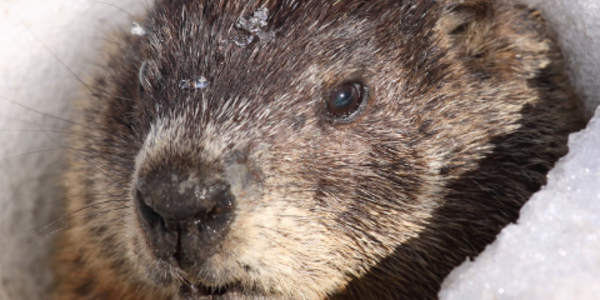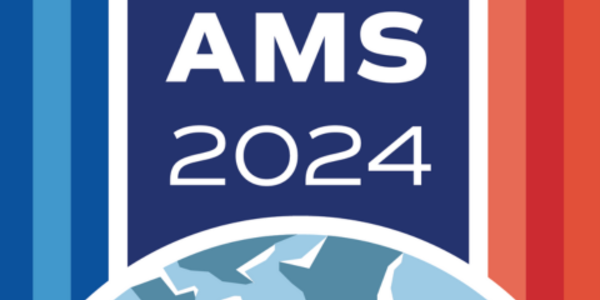Building climate resilience and the next generation of scientists

Environmental data stewardship is just part of what we do. We analyze climate, weather, oceanic, coastal, and geophysical data and phenomena. We conduct research, create databases, and write summaries, outlooks, and assessments. Our scientists and staff also go “outside the science” to communicate with many audiences. We educate, collaborate, and seek feedback from our stakeholders and the public. Occasionally, we also inspire.
In this ongoing series, NCEI Outside the Science highlights our outreach and educational activities and engagement with data users, scientists, educators, students, the public, private enterprise, governments, nonprofits, and others. Find out how we reach beyond the archive.
Weather and Climate Data for Tribes
NCEI supports an effort by four Indian tribes in the High Plains to build capacity in water resources management. NCEI’s Regional Climate Service Director Doug Kluck has been exchanging knowledge with the Iowa Tribe of Kansas and Nebraska, Kansas Kickapoo Tribe, Prairie Band Potawatomi Nation, and Sac and Fox Nation of Missouri in Kansas and Nebraska.
The effort brings a broad base of organizations together. The long-term goal is to not only to build the tribes’ capacity but to help with understanding vulnerabilities to extreme climate and weather events and plan accordingly. The tribes are partnering with the High Plains Regional Climate Center (HPRCC) and the National Integrated Drought Information System (NIDIS) to learn more about climate data, monitoring, change, and predictions. Our Regional Climate Services Directors work in regions and communities with the goal of integrating climate knowledge and data into decision-making.
“It is, after all, a learning process, and the tribes don't often have a climatologist or communications specialist on staff,” says Kluck. “It is incumbent on us to recognize these characteristics and build partnerships to help where we can.”
The tribes, known as The Four Kansas Tribes, produced their first summary this spring about regional climate conditions. They are working with Haskell Indian Nations University under a Bureau of Indian Affairs (BIA) Water Planning Grant to create a set of tools that will allow them to better understand available resources and build resilience. Similar efforts are underway with four tribes in South Dakota in partnership with the BIA and NIDIS.
Mentoring a Young Scientist
How can satellite microwave data improve operational hurricane intensity forecasting? That might sound like a complicated question to tackle, but with help from one of our scientists, a junior at Tesla Science, Technology, Engineering, and Math (STEM) High School in Redmond, Washington, turned the subject into a multiple-award-winning science project.
Aashna Sheth worked with Jim Kossin, an NCEI weather and climate scientist who studies hurricanes and tropical cyclones. In a series of detailed emails and several long phone conversations over many months, Kossin supported Sheth’s research and provided explanations to interpret microwave images for her work. It was a virtual mentorship.
Her project, “The Application of Microwave Satellite Data to the Statistical Hurricane Intensity Prediction Scheme,” won several accolades. Honors have come from the American Meteorological Society, U.S. Office of Naval Research, the Association of American Geoscientists, Sigma Chi, and Alpha Mu.
Education in the Gulf
A springtime marine celebration in the Gulf of Mexico gave us the opportunity to share our coastal and ocean expertise. “Celebrate the Gulf Marine Education Festival” in Pass Christian, Mississippi, brought us together with partners from the Northern Gulf Institute (NGI) in early April to meet the public and have some fun, too. Using a tray of rice, mock “trawl,” and marine animal figurines, we asked kids to tally the type and number of collections from the trawl activity, demonstrating how we conduct science from data-gathering to end result. More than 100 kids participated in our booth activity, becoming scientists for the day!
At another recent Gulf event, staff from NCEI and NGI copresented past work with the NOAA Southeast Fisheries Science Center and the Okeanos Explorer program at a high school science seminar. The Gulfport High School STEM group in Mississippi consists of 30 juniors and seniors who have been participating in Gulf of Mexico watershed-centric seminars coordinated by the Environmental Protection Agency. Along with the talk, we provided links for volunteer work, internships, scholarships, and our web pages to students and teachers.
Check NCEI News for more coverage about our archive, science, and uses of our data.



